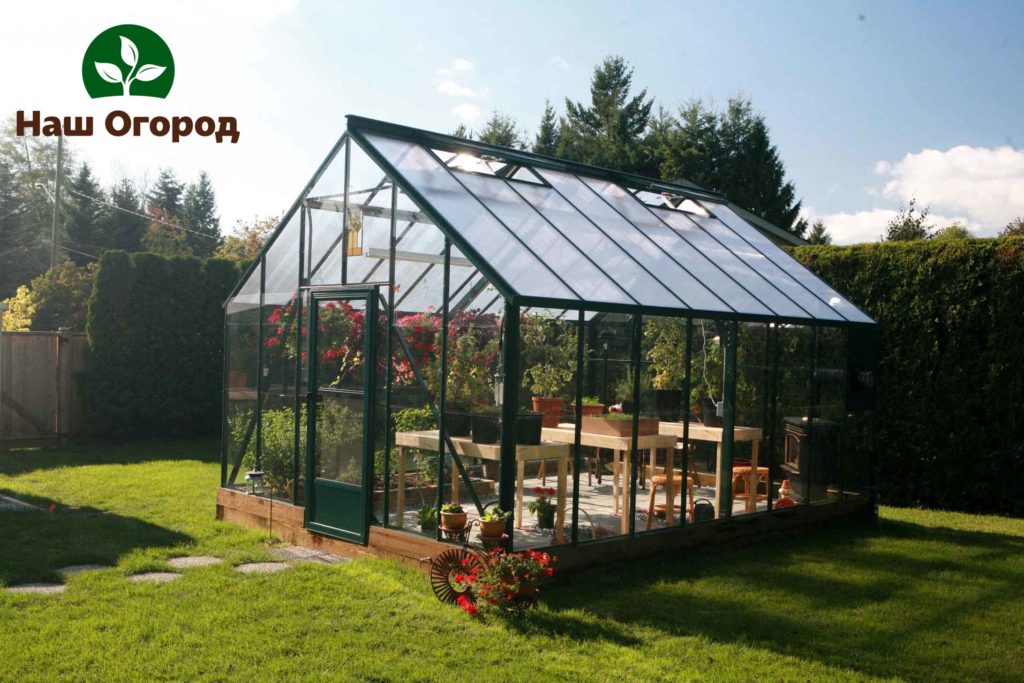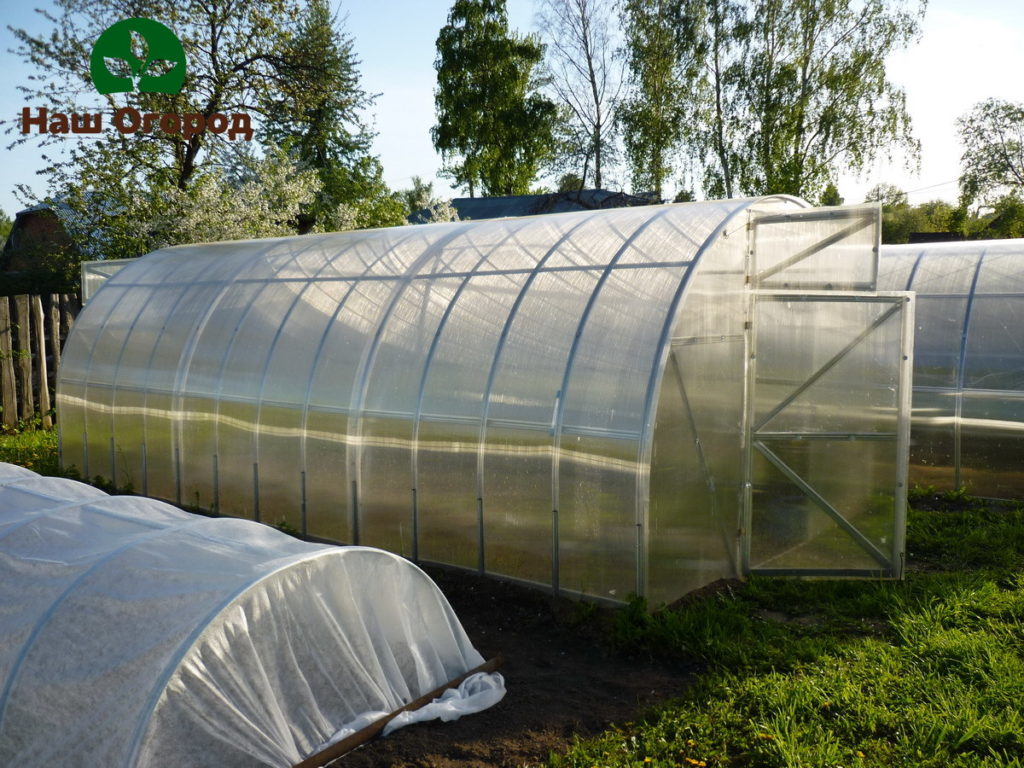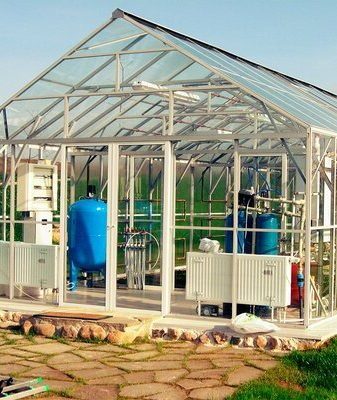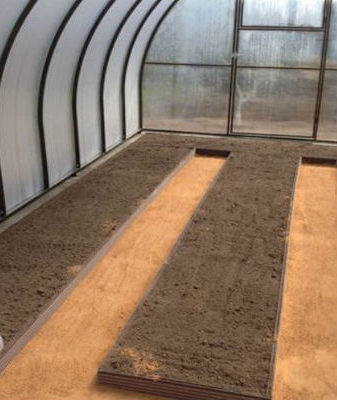How to choose a polycarbonate greenhouse: tips, reviews
Content:
Nowadays, both in the domestic and foreign markets, a huge number of options for different types of greenhouses and greenhouses are presented, which differ from each other in size, shape and type of materials. But, what should you initially look for when choosing this garden equipment? Or, in a simple way, how to choose a greenhouse?
Which greenhouse to choose for a summer residence?
The first step in choosing a greenhouse should focus on the frame from which the greenhouse or greenhouse is arranged. The frame is the backbone and a sign of the quality and long service life of this garden equipment.
Nowadays, frames for greenhouses are made from the following materials: wood, metal, plastic and aluminum. Each of these materials has both pros and cons.

Greenhouse frame: photo
Greenhouse aluminum frame
When purchasing a greenhouse or greenhouse made of aluminum, the buyer gets an outwardly beautiful shape, a stainless surface and the likelihood of moving the structure without any special actions, since the weight of such a greenhouse will be small when compared with a metal frame or a frame made of wood. But nevertheless, the presented material has drawbacks that can be described by low strength and instability of the structure with moderate and strong gusty winds and in winter, which is why for the presented type of greenhouse it is necessary to more seriously prepare the support and, if necessary, tie it to small posts or the same for metal frames.
Wooden frame
When choosing a greenhouse frame made of wood, you can get an environmentally friendly and definitely cheap option for a greenhouse, but the reliability of this type of equipment is very doubtful, since the presented material is more prone to decay and breakdown.
Steel frame
The steel frame of the greenhouse is made of galvanized metal with a thickness of about 0.8 mm, but not less, it is more optimal if the gardener wants to buy a greenhouse or greenhouse once and for many years. The strength and reliability of this material leaves no shadow of doubt. It is for this reason that many manufacturers of high-quality greenhouses or greenhouses have chosen this particular material. The only drawback of which is the price for this equipment, but the quality and service life of this greenhouse, if used correctly, can exceed 10 to 25 years.
Choosing a greenhouse cover material
Today, the most popular are glass, polyethylene and polycarbonate covering materials for greenhouses. Each of these materials has both pluses and minuses.
Glass cover material
Glass cover for greenhouses does a good job of retaining heat, letting in the rays of sunlight and it is quite easy to care for them, since to clean them, you just need to wipe misted or dirty glass surfaces from time to time. But among these positive qualities, glass greenhouses and greenhouses have certain disadvantages:
Do not pass the necessary ultraviolet rays of the sun;
Due to the too heavy weight of the glass, a powerful greenhouse or greenhouse frame is needed;
Fragility of the material and the risk of increased injury in case of accidental glass breakage;
A rather difficult process of replacing broken, cracked or lost sheets of their fulfilling role.
Polyethylene film
The use of polyethylene as a covering material for greenhouses and greenhouses, as in the case of a glass coating, has both pros and cons.The main advantage of this material is its relatively low price, which became, more likely, the main reason for such a strong attachment of all gardeners to this type of material. Polyethylene is quite easy to use, transmits light well and does an excellent job of keeping plants warm. But the disadvantages are inherent in this type of coating:
The accumulation of a huge amount of condensate on the film shell, which can be the main cause of the appearance of fungal diseases in plants.
The reliability of this material is a very controversial issue and you need to be prepared annually, if necessary, to update the cover of your greenhouse or greenhouse.
How to choose a greenhouse: cellular polycarbonate
Polycarbonate can become a modern replacement for polyethylene and glass coatings. Cellular polycarbonate is a transparent double-sided plastic between two cells of which there is air.
The main advantages of this material:
- Good strength, and hence the durability of the material. Greenhouses made of polycarbonate cope very well with any weather conditions and are not dangerous for them hail and gusts of wind;
- Great appearance;
- Low weight of the structure, which makes it possible to move the greenhouse if necessary;
- Polycarbonate retains heat very well;
- The light transmission of this material can provide excellent illumination for plants.
 Polycarbonate greenhouse: photo
Polycarbonate greenhouse: photo
What is the best shape for polycarbonate for a greenhouse?
Each gardener can choose the size and shape of the greenhouse independently. On sale there are greenhouses and greenhouses of various shapes and designs, from the usual arched ones to real small houses of plants. When purchasing greenhouses, you need to think about the necessary shapes, sizes and other design features that you would like to see on your site.
Thus, summing up, we can assume that the best option would be to have an arched polycarbonate greenhouse or a greenhouse with a galvanized frame on its site.




